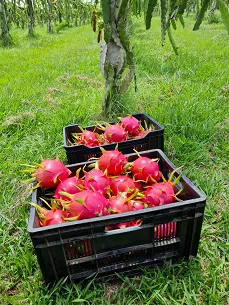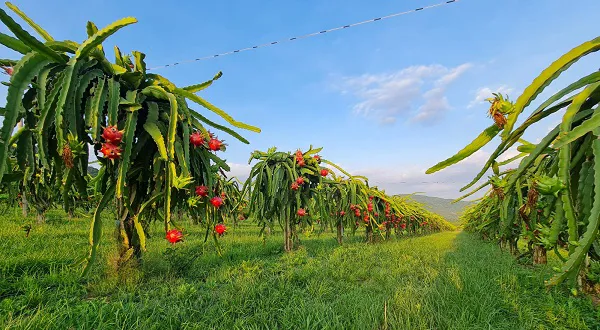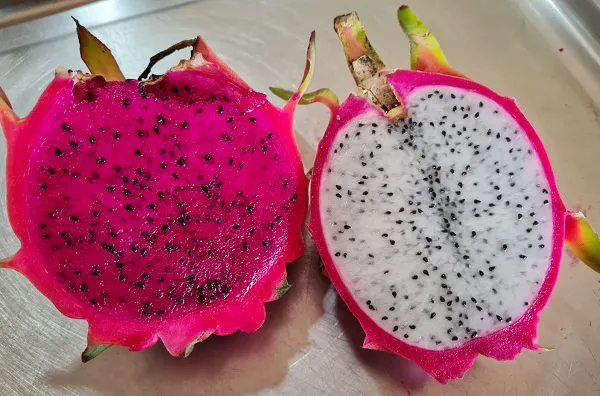 In South Africa and in all of her neighbours, with the exception of Lesotho, growers are planting dragonfruit and their interests are now represented by the newly-established Dragonfruit Growers’ Association of Southern Africa with members as north as Zambia.
In South Africa and in all of her neighbours, with the exception of Lesotho, growers are planting dragonfruit and their interests are now represented by the newly-established Dragonfruit Growers’ Association of Southern Africa with members as north as Zambia.
“We set up the association to create standards for the young industry in terms of fruit size and quality, while stimulating research and sharing information among members,” explains the association's chairperson Fred Steyn, who has been farming with dragonfruit since 2014 in Nelspruit, Mpumalanga Province. “We’d like to draw everyone into the association, not only in South Africa but also beyond.”
He was looking for an ‘out-of-the-box’ commodity that would fare well in the subtropical Lowveld, as an alternative to the citrus, avocados and macadamias usually grown in his area.
There are around 40 sites across South Africa where dragonfruit is being trialled across many climatic zones. The one thing it can’t take is frost and the past two severe winters in the Mpumalanga Lowveld and Limpopo took its toll on a number of dragonfruit orchards.
It is currently tested as far afield as the West Coast and Robertson in the Western Cape right up to Waterpoort close to the border with Zimbabwe, and in KwaZulu-Natal to the east.
 Intensive pruning is needed when dragonfruit plants are young (photos supplied by Fred Steyn)
Intensive pruning is needed when dragonfruit plants are young (photos supplied by Fred Steyn)
In South Africa dragonfruit plantings are roughly evenly divided between white-fleshed and pink-fleshed fruit; most new plantings are of the pink- and red-fleshed fruit of which there are more varieties available, Fred says.
Dragonfruit orchards are now coming into flower – the contribution of bees and other nocturnal pollinators was perhaps underestimated in the beginning, he remarks – and fruit are harvested from December into May, a season of around six months.
Because the cactus needs support, a lot of pruning is required especially when the plants are still young. It is a labour-intensive industry as there is no mechanization for pruning or harvesting and everything is done by hand.
Commercially, there are no more than ten dragonfruit producers in South Africa and most of the crop is not being exported, yet.
 The dragonfruit harvest has started in South Africa
The dragonfruit harvest has started in South Africa
South Africa can offer top quality fruit for export
Airfreight exports to Europe, the UK and the Middle East are the eventual focus for the dragonfruit industry. “South African dragonfruit exports have made big strides over the past few years and we would like to expand that,” he says. Europe is the preferred export market for South African dragonfruit which is available from December into May and export prices have been quite good over the past few years.
“Our aim is to build confidence in South African dragonfruit. Our high quality is a distinguishing feature; South Africa does very well with other commodities and we produce a high quality product at a very competitive price,” Fred maintains.

“Our biggest competition is the Far East growers of Vietnam but we aim to deliver a better quality fruit with a lower chemical footprint to the international market.”
Locally, the exotic fruit is becoming better known and prices are stabilising. For more information:
For more information:
Fred Steyn
Dragonfruit Growers’ Association of Southern Africa
Tel: +27 82 469 3328
Email: fred.steyn@gmail.com
